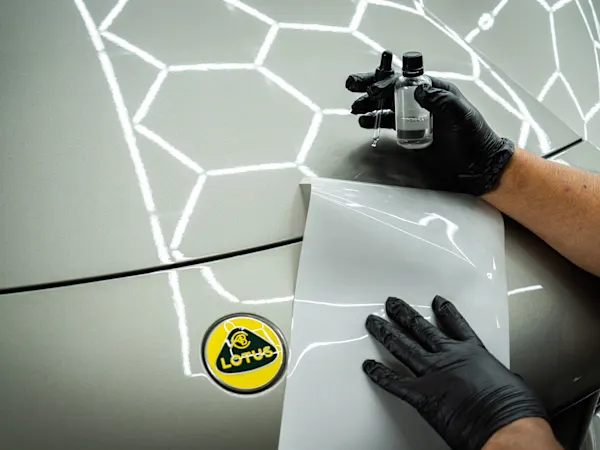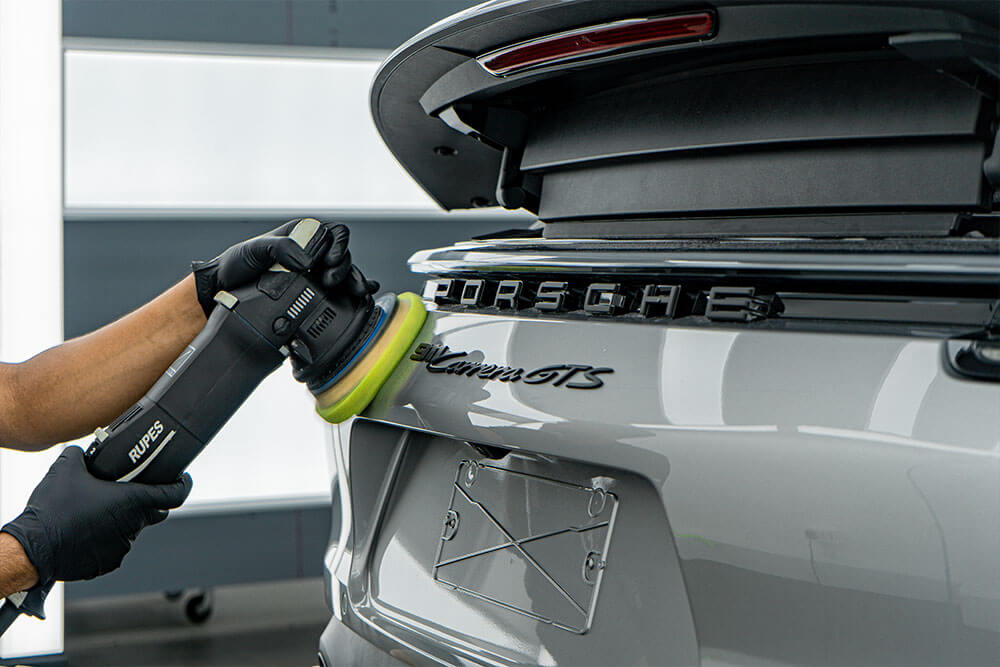
Alright, listen up – if you’ve been doing any kind of research into paint protection films (PPF) lately, you’ve almost certainly stumbled across all the buzz about “ceramic-infused” PPF. It’s touted as this fantastic blend of everything you could want: the tough-as-nails impact protection of regular PPF, plus the slick, water-shedding magic of a ceramic coating. All in one tidy package! Sounds pretty sweet, doesn’t it? But, seriously, does it actually measure up to all that hype, or is it just another clever marketing trick playing on our desire for simplicity?
It genuinely sounds like a dream come true at first, right? One product that gives you both hardcore protection and makes water bead up like nobody’s business. Who wouldn’t be tempted? But hold on a second – is it really as good as it seems, or are we missing some critical fine print here?
So, What Are We Even Talking About with Ceramic-Infused PPF?
Okay, let’s simplify this. Ceramic-infused PPF is basically just a layer of paint protection film that has tiny ceramic particles (mostly silicon dioxide, if you’re into the specifics) blended right into its very top surface. This is a big departure from the way things used to be done, where you’d first get your standard PPF applied, and then you’d slap on a separate ceramic coating. With this “infused” stuff, it’s all built-in from the get-go. The idea is that you score all the benefits in one smooth, less-hassle application.
The Big Selling Point: Pure Convenience
Here’s the hook, plain and simple: convenience. Ceramic-infused PPF whispers sweet nothings about how you won’t ever need to worry about applying a separate ceramic coating after your PPF is installed. It’s all handled in a single shot. Sounds like the ultimate time-saver, right? No extra trips, no extra appointments.
But here’s the rub, and it’s a significant one: does all this lovely convenience actually mean you’re sacrificing something on the performance front? That’s the critical question we need to unpack.
Let’s Talk Old School: The Traditional Two-Step Method
Now, let’s stack this up against the tried-and-true, classic method. In the traditional two-step dance, you first get the PPF on your vehicle. Then, once that bad boy is completely settled and cured, you then go ahead and apply a distinct, separate ceramic coating over it. This process has been around forever, practically, and it’s earned its solid reputation for delivering really robust, long-lasting protection and consistently stellar performance. There’s a reason it’s considered the benchmark.
The Showdown: Performance – Ceramic-Infused PPF vs. The Traditional Method
Alright, so how does ceramic-infused PPF actually hold up when we get down to brass tacks?
Hydrophobic Performance
Sure, ceramic-infused PPF does a perfectly decent job at repelling water and dirt. It definitely helps keep your car looking cleaner, and you’ll see water beading up and rolling off nicely. But here’s the kicker, and it’s an important one: it just doesn’t have the same staying power as a dedicated, standalone ceramic coating. The ceramic coating used in that traditional two-step method? That stuff is typically thicker, far more concentrated, and truly engineered to last for years on end. The ceramic properties infused into the PPF simply can’t match that level of raw, long-term durability. It’s just not built that way.
The “Sacrificial Layer” Advantage – A Big Deal!
Here’s where the traditional two-step method really pulls ahead and leaves the infused option in the dust: the concept of a sacrificial layer. What’s that mean for you? It means if your ceramic coating happens to get scratched, or if it starts to lose its fantastic water-shedding capabilities over time, you can often just polish that layer off and apply a fresh one. You don’t have to touch or replace the actual PPF underneath.
But with ceramic-infused PPF? If that built-in ceramic layer gets damaged or wears out, you’re looking at potentially replacing the entire PPF panel to get those ceramic benefits back. Think about the costs here – that could absolutely hit your wallet a lot harder in the long run! It’s something to seriously consider.
The Verdict: So, Which One’s Your Best Bet?
Alright, we’ve gone through the nitty-gritty. Now, for the million-dollar question: what’s the right choice for you? Ceramic-infused PPF or the classic two-step method? Honestly, it truly boils down to what you value more in your car care routine: is it ultimate convenience, or is it rock-solid, long-term protection?
If Convenience is King: Ceramic-Infused PPF is a Solid Play
If you’re someone who wants something quick, simple, and relatively fuss-free, ceramic-infused PPF is a perfectly great choice. It’s straightforward to apply (or have applied), and for a lot of folks, it’ll do the job just fine. It’s definitely the “easy button” here.
For the Absolute Best, Long-Term Protection: Stick with the Two-Step Method
However, if you’re like me, and you want the absolute highest level of protection that’s designed to last and keep your vehicle looking its absolute best for years, then the traditional two-step method is still, hands down, the way to go. It offers you:
- Hydrophobic properties that genuinely go the distance. We’re talking about that amazing water-beading action lasting significantly longer.
- The crucial ability to reapply just the ceramic coating whenever it starts to show signs of wear, without ever having to touch or replace the underlying PPF. This is a huge cost-saver and longevity booster!
With the two-step method, you’re getting superior, more robust performance, and because you can easily maintain the ceramic coating without swapping out the entire PPF, it honestly becomes the more cost-effective option over the long haul.
The Real Bottom Line: Easy Does It, or Built to Last?
Ultimately, ceramic-infused PPF is pretty great if you prioritize ease of use and just want something simple. It’s effective, no doubt about it, and works well enough for many. But, if your priority is genuinely top-tier, incredibly durable, and long-lasting protection for your prized possession, the traditional two-step process still holds the crown.
It truly just boils down to what’s more important to you – the convenience of a quick, combined solution, or the peace of mind that comes with truly lasting, best-in-class protection. Choose wisely!


